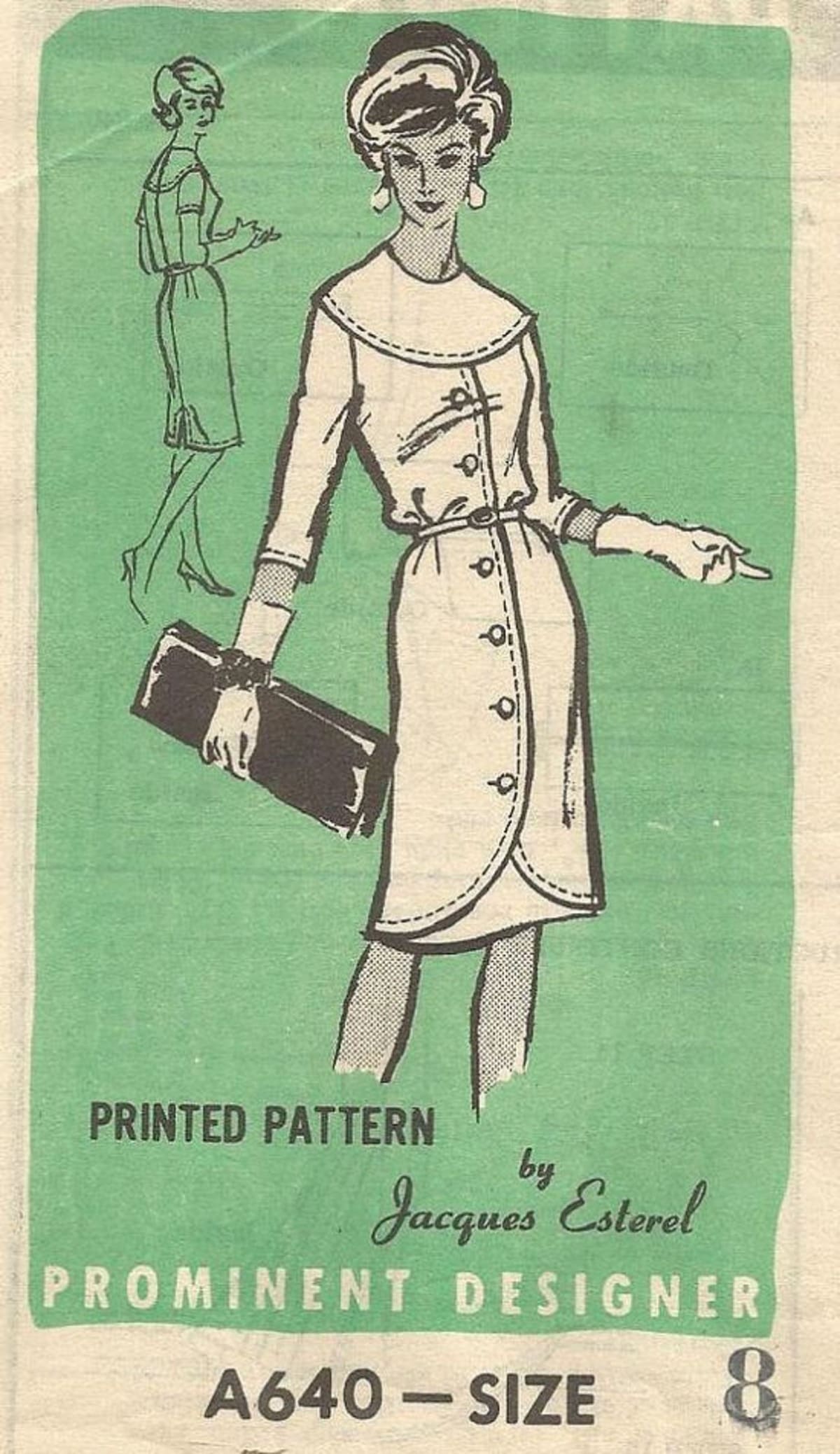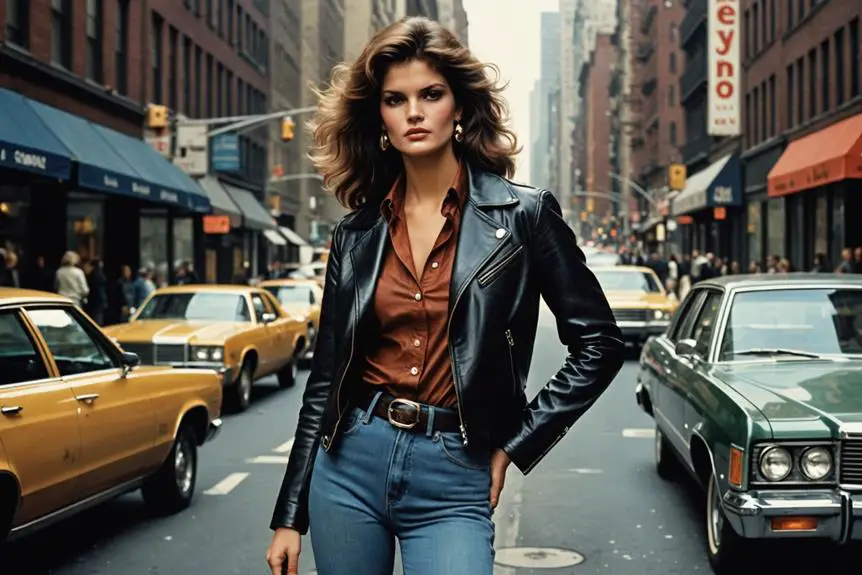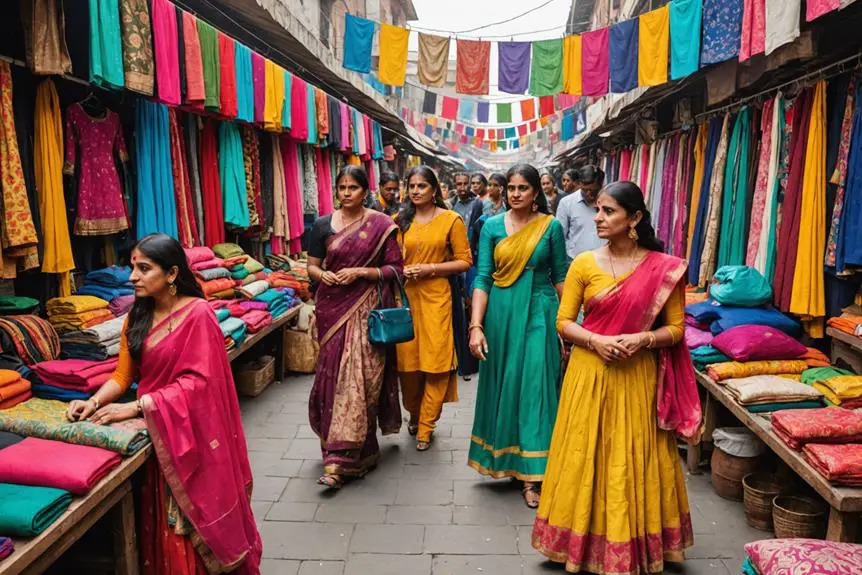Jacques Esterel, a name synonymous with creativity and flair, left an indelible mark on the world of fashion. Born Charles Martin in 1918, Esterel was an engineer by training, but his true passion lay in the arts. After an inspiring visit to the home of fashion designer Louis Féraud, he decided to shift gears and pursue a career in fashion. In 1953, he founded Creations Jacques Esterel, and though the early years were marked by his inexperience, by 1958, his designs had captured the attention of the fashion world. The turning point came in 1959 when he designed the iconic Vichy wedding dress for French actress Brigitte Bardot, a piece that would cement his reputation as a leading couturier.
Esterel’s approach to fashion was anything but conventional. He often referred to himself as a “Parisian craftsman of dresses and songs,” a nod to his dual passions for fashion and music. His collections were infused with a sense of theatricality, often featuring whimsical and innovative designs that challenged the status quo. Whether it was his bold decision to have models parade with shaved heads or his creation of unisex clothing lines in the 1970s, Esterel was never afraid to push the boundaries of what was considered acceptable in fashion. This daring approach not only made his shows highly anticipated events but also earned him a reputation as a maverick in the industry.
After his untimely death in 1974, Esterel’s legacy was carried forward by his wife and daughter, who continued to run the fashion house with the same spirit of innovation. The brand maintained its avant-garde edge, even engaging in high-profile legal battles with giants like Yves Saint Laurent, proving that the Esterel name was a force to be reckoned with in the fashion world. Despite the challenges, Creations Jacques Esterel remained a symbol of French haute couture, blending engineering precision with artistic creativity, and leaving a lasting impact on the industry.
1966 Jacques Esterel & Pierre Cardin Fashion Show
How to tell if Jacques Esterel is vintage from the logo
Jacques Esterel, a French fashion brand known for its distinctive style, has undergone several logo changes over the decades. These changes reflect the brand’s evolution in the fashion world, moving from its early designs in the mid-20th century to more modern interpretations. Understanding these logo transformations can help in identifying whether a Jacques Esterel item is vintage.
1950s to 1970s Jacques Esterel logo
- The logo from this era features a detailed, stylized font for the brand name.
- The text is bold with an emphasis on the handcrafted, artistic quality typical of the mid-20th century.
- This era’s logo is often found on labels of the brand’s haute couture collections, reflecting its prominence in the fashion world during this period.

1950s to 1970s Jacques Esterel logo
1970s to 1980s Jacques Esterel logo
- The logo evolved to incorporate a more modern, abstract design.
- The introduction of the bold red geometric shapes, which form a stylized “JE,” became a prominent feature.
- This logo also included the brand name “Jacques Esterel” in a cleaner, more minimalist font underneath the emblem.
- This design marked a shift towards a more contemporary and versatile brand image as Jacques Esterel expanded its product lines.
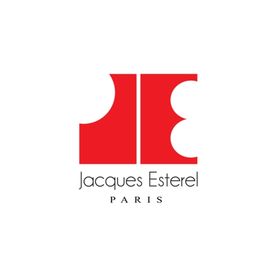
1970s to 1980s Jacques Esterel logo
How to tell if Jacques Esterel is vintage from the tags
Jacques Esterel is a brand known for its Parisian flair and innovative designs, with a history that spans several decades. The evolution of its tags reflects the changes in fashion trends and branding strategies over the years. Understanding these tags can help identify whether a Jacques Esterel piece is vintage and from which era it originates.
Need help with vintage tags or labels? Submit a picture on our vintage tag identification page, and we’ll assist you!
1950s vintage Jacques Esterel tags
- Tags from the 1950s often feature bold serif fonts that were popular during this period.
- The brand name “Jacques Esterel” is prominently displayed, usually with “Paris” beneath it, indicating its origins.
- Tags are typically square or rectangular with a simplistic design, reflecting the minimalistic style of the era.
- Some tags also include the address “67 Rue Pierre Charron Paris,” emphasizing the brand’s Parisian roots.
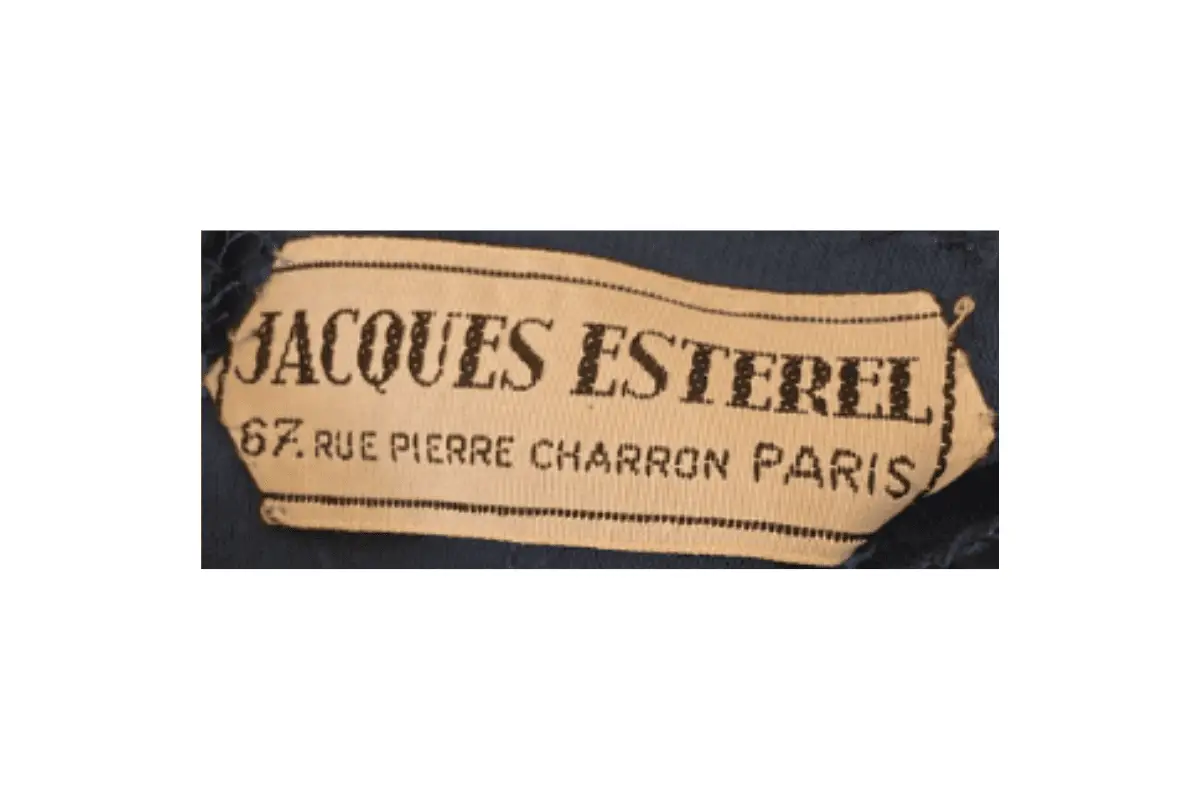
1950s Jacques Esterel tags
1960s vintage Jacques Esterel tags
- Tags from the 1960s continue to use serif fonts but may also include additional branding elements.
- “Création” is often included above the brand name, highlighting the creative aspect of the designs.
- The address “67 Rue Pierre Charron Paris” is still present on some tags, further establishing the brand’s location.
- Tags might also include the term “Modèle Déposé,” indicating the registered design of the item.
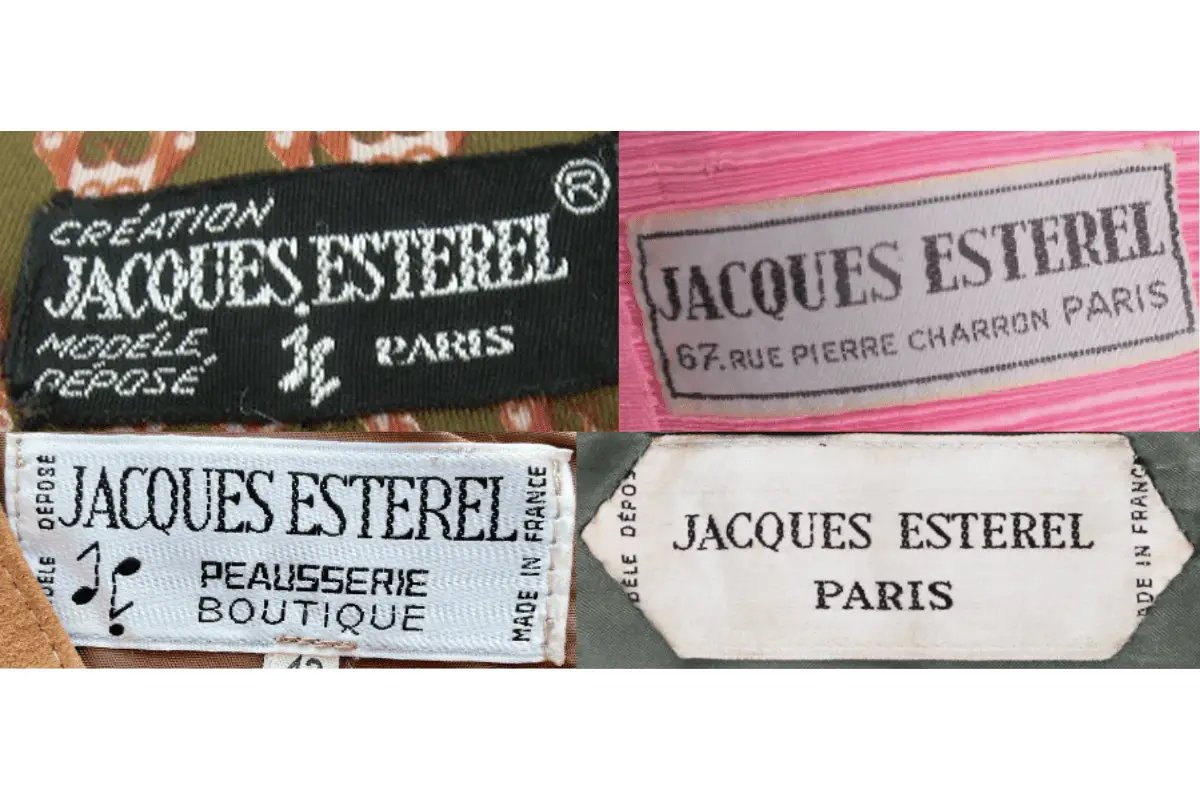
1960s Jacques Esterel tags
1970s vintage Jacques Esterel tags
- In the 1970s, tags began to incorporate more detailed designs, with “Création Jacques Esterel” becoming a common format.
- Tags from this era often include a logo, such as the stylized “J” or other unique design elements, reflecting the brand’s growing identity.
- The text is typically bold, with “Paris” prominently displayed, and “Modèle Déposé” indicating a registered design.
- Tags might be either black or white, with contrasting text, giving them a distinct, high-contrast appearance.
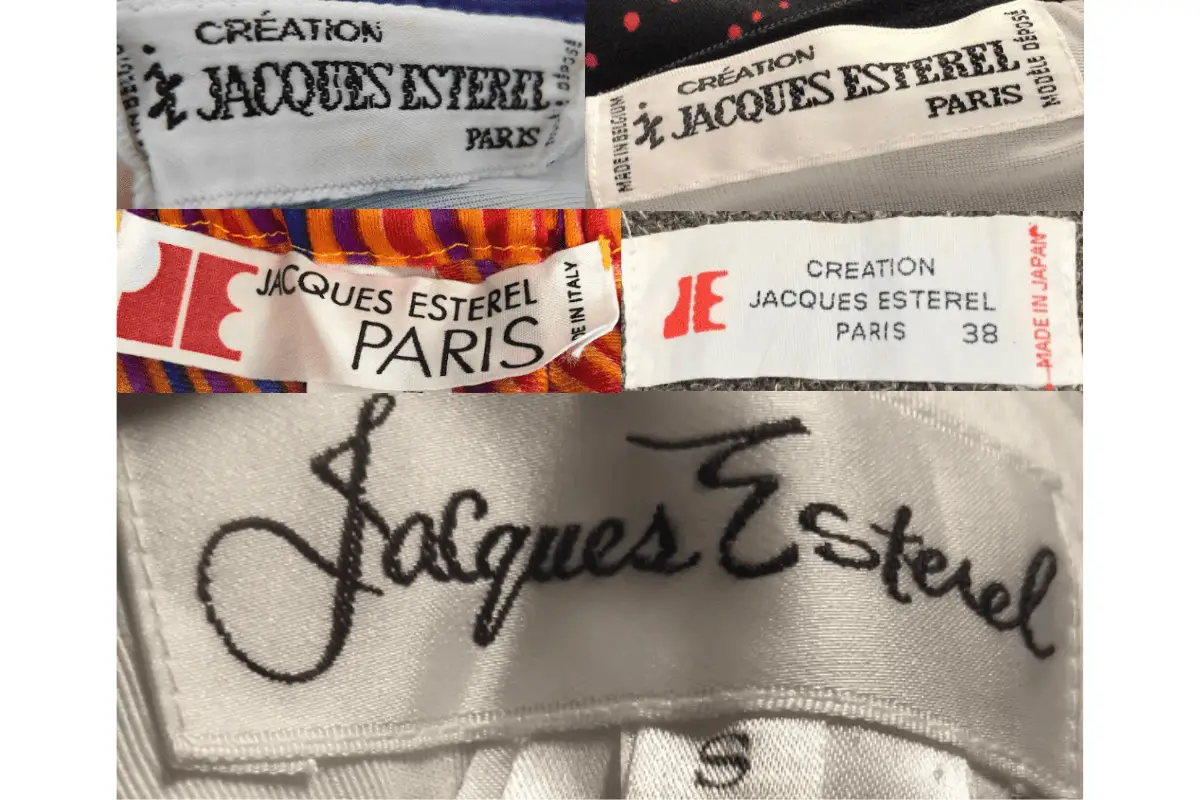
1970s Jacques Esterel tags
1980s vintage Jacques Esterel tags
- The 1980s saw a shift towards more modern and varied designs, with tags often featuring a mix of serif and sans-serif fonts.
- Branding elements such as logos became more prominent, with the “Création Jacques Esterel” format continuing.
- Tags may include more intricate designs, like the addition of a color logo or more stylized fonts.
- The presence of the “Made in France” label on some tags highlights the authenticity and origin of the garments.
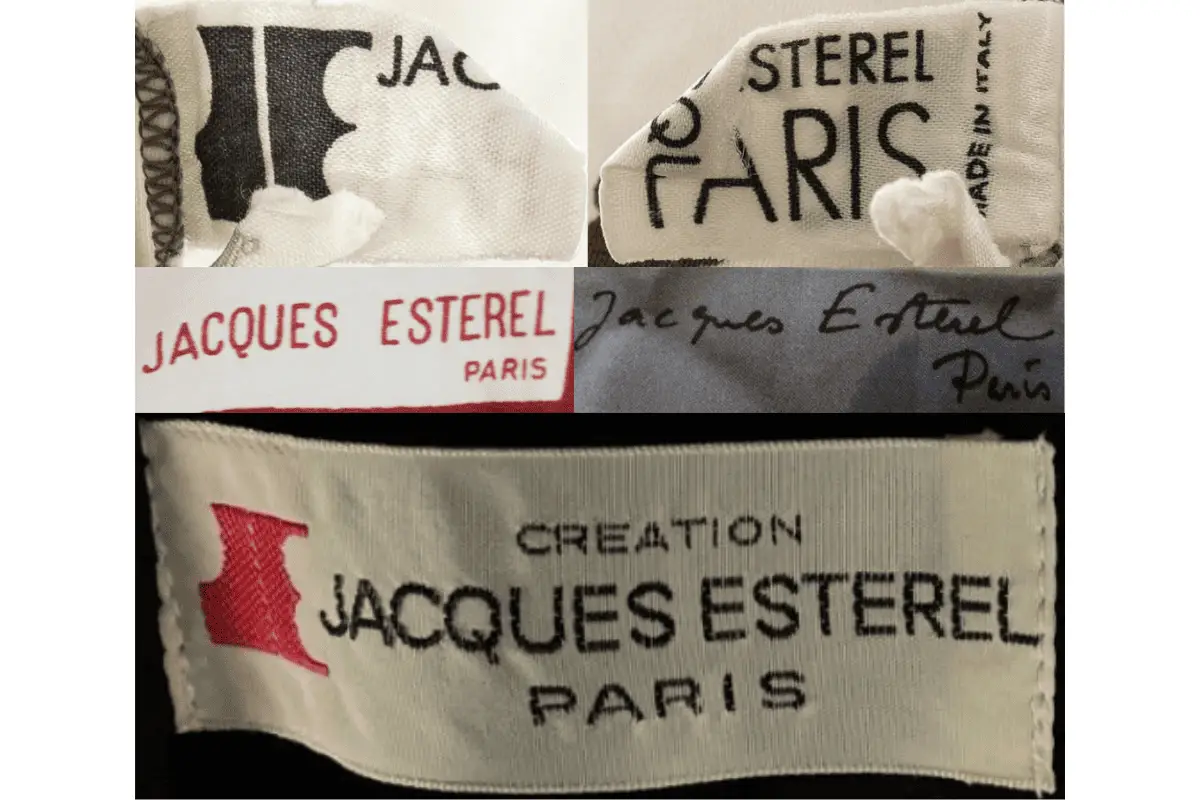
1980s Jacques Esterel tags
